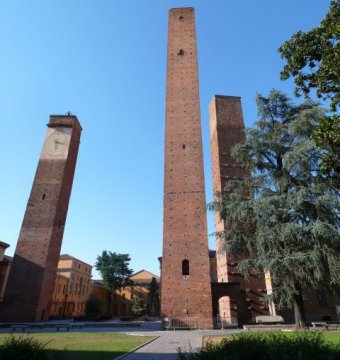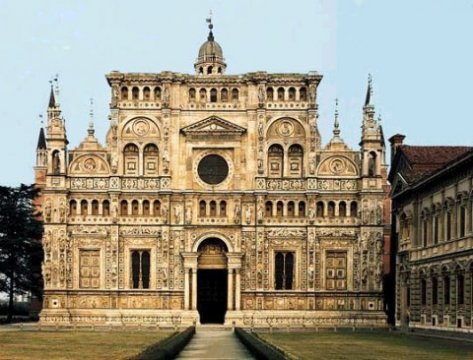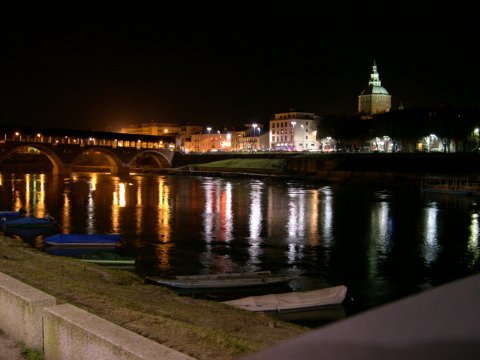About Pavia
 Pavia, the ancient Ticinum, is a town of south-western Lombardy, northern Italy, 35 km south of Milan on the lower Ticino river near its confluence with the Po.
It has a population of c. 71,000.
Pavia, the ancient Ticinum, is a town of south-western Lombardy, northern Italy, 35 km south of Milan on the lower Ticino river near its confluence with the Po.
It has a population of c. 71,000.
The city achieved its greatest
political importance between 568 and 774, as the capital of the Kingdom of the Lombards.
 Pavia is the capital of a fertile eponymous province known for agricultural products including wine, rice, cereals, and dairy
products. Although there are a number of industries located in the
suburbs, these tend not to disturb the peaceful atmosphere of the town.
The town also is home to the ancient University of Pavia. The University, together with the IUSS (Institute for Advanced Studies of Pavia), the Ghislieri College, the Borromeo College, the Nuovo College, the Santa Caterina College and the EDiSU, belongs to the Pavia Study System. Furthermore, Pavia is the see city of the Roman Catholic diocese of Pavia.
The city possesses a vast amount of artistic and cultural treasures,
including several important churches and museums, such as the well-known
Certosa di Pavia.
Pavia is the capital of a fertile eponymous province known for agricultural products including wine, rice, cereals, and dairy
products. Although there are a number of industries located in the
suburbs, these tend not to disturb the peaceful atmosphere of the town.
The town also is home to the ancient University of Pavia. The University, together with the IUSS (Institute for Advanced Studies of Pavia), the Ghislieri College, the Borromeo College, the Nuovo College, the Santa Caterina College and the EDiSU, belongs to the Pavia Study System. Furthermore, Pavia is the see city of the Roman Catholic diocese of Pavia.
The city possesses a vast amount of artistic and cultural treasures,
including several important churches and museums, such as the well-known
Certosa di Pavia.
 Dating back to pre-Roman times, the town of Pavia (then known as Ticinum) was a municipality and an important military site (a castrum) under the Roman Empire.
Dating back to pre-Roman times, the town of Pavia (then known as Ticinum) was a municipality and an important military site (a castrum) under the Roman Empire.
A late name of the city in Latin was Papia (probably related to the Pope), which evolved to the Italian name Pavia. Sometimes it's been referred to as Ticinum Papia, combining both Latin names.
The Battle of Pavia (1525) marks a watershed in the city's fortunes, since by that time, the former cleavage between the supporters of the Pope and those of the Holy Roman Emperor had shifted to one between a French party (allied with the Pope) and a party supporting the Emperor and King of Spain Charles V. Thus during the Valois-Habsburg Italian Wars, Pavia was naturally on the Imperial (and Spanish) side.
In 1815, it again passed under Austrian administration until the Second War of Italian Independence (1859) and the unification of Italy one year later.
To know more about Pavia history and what the city offers, please visit:
http://en.wikipedia.org/wiki/Pavia






